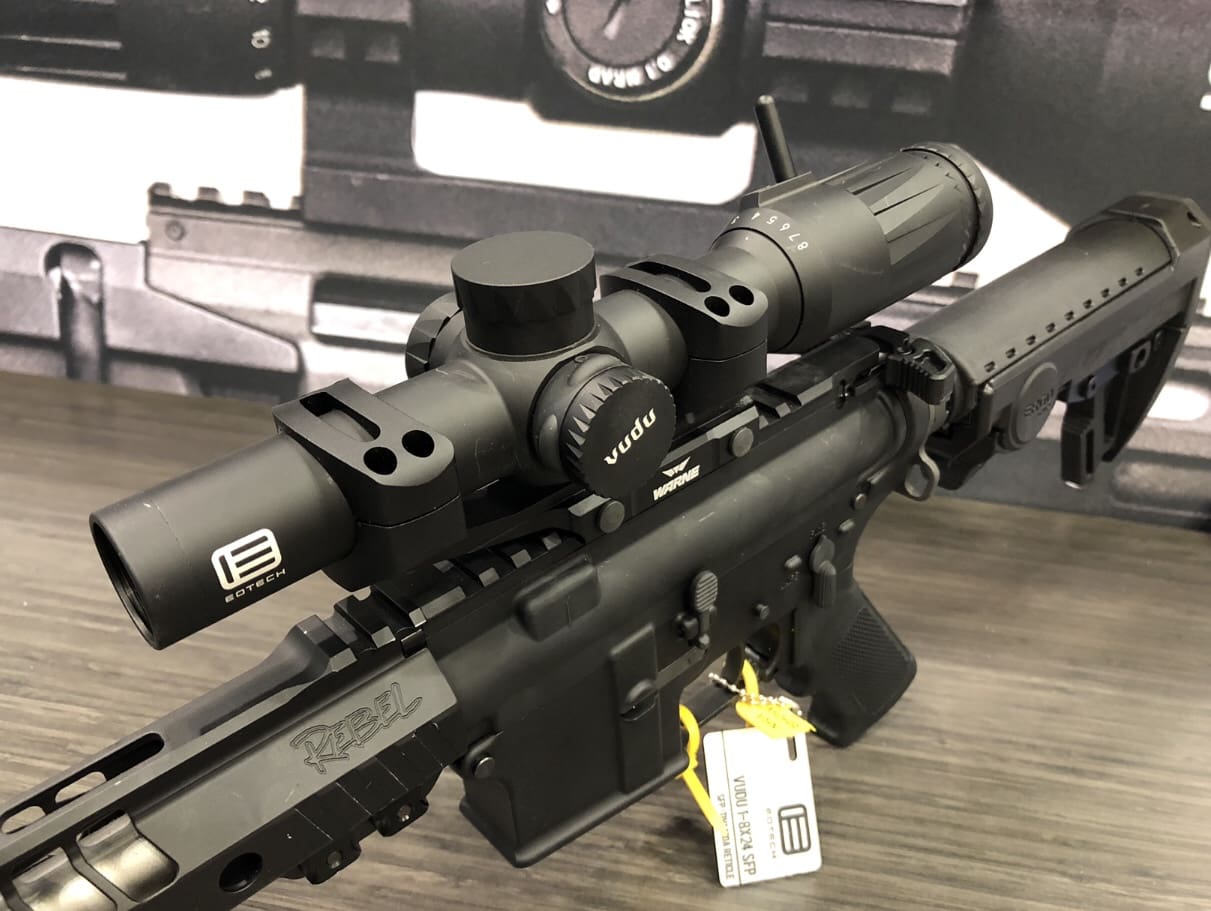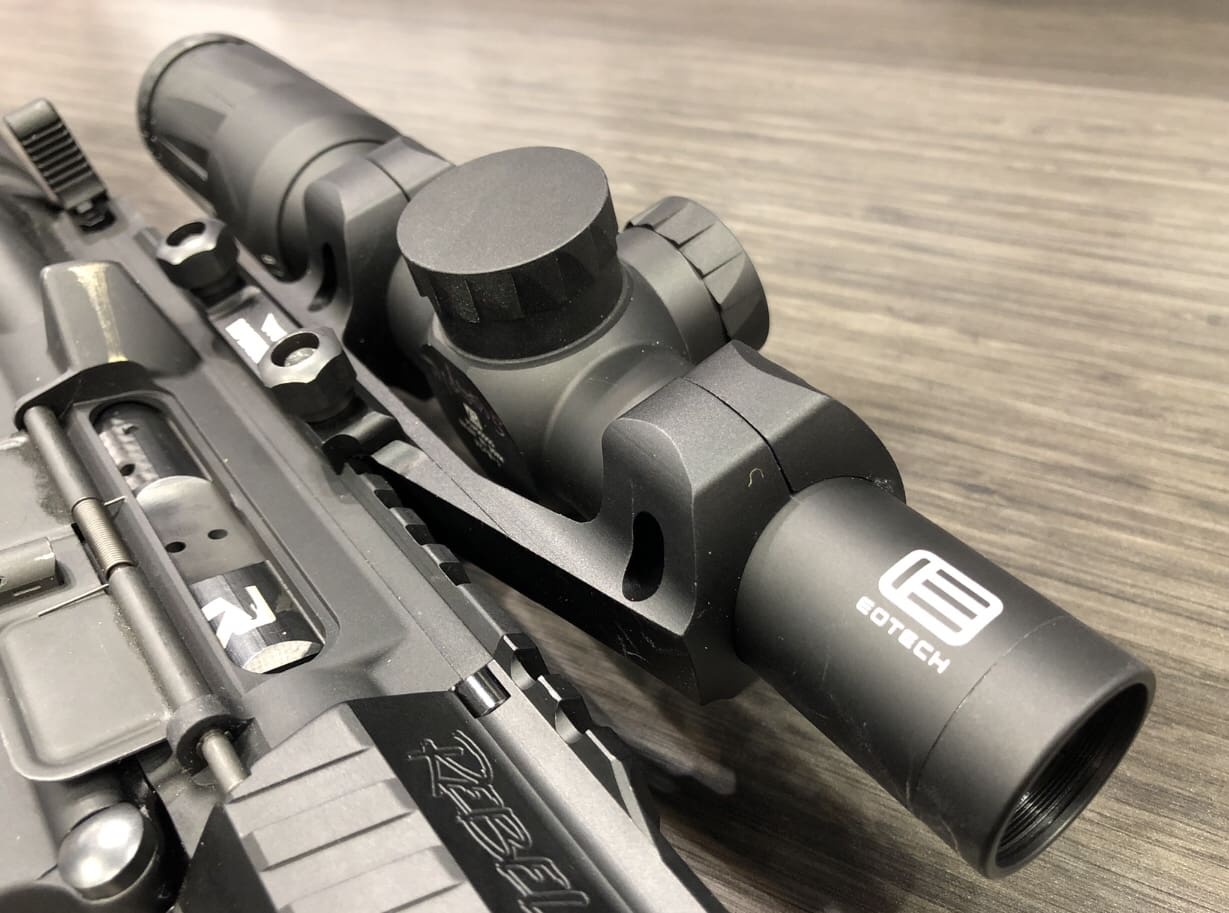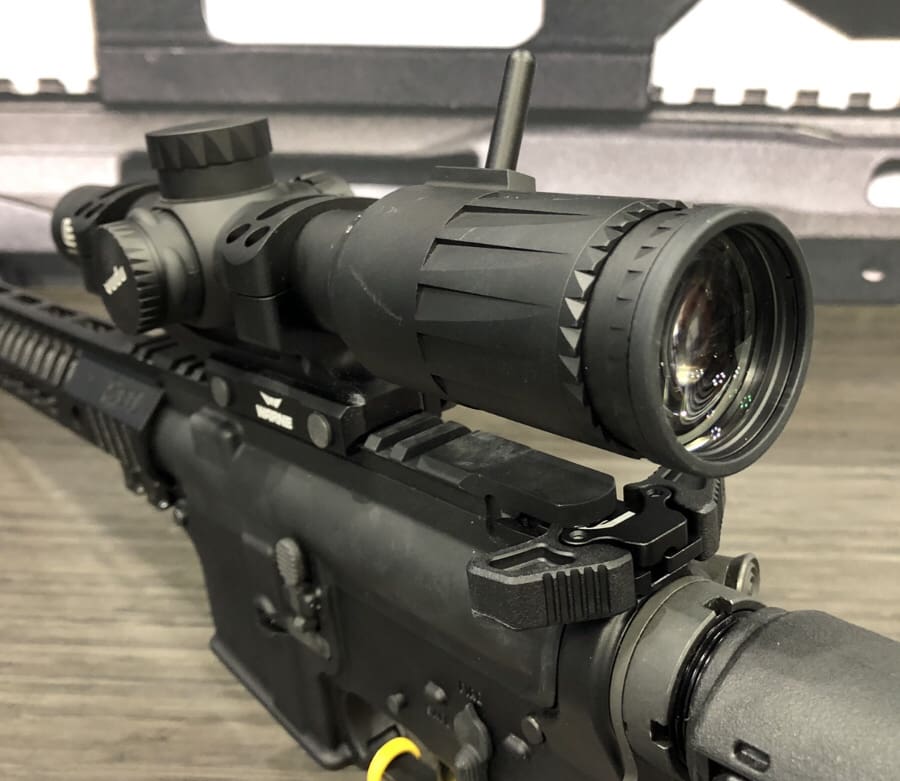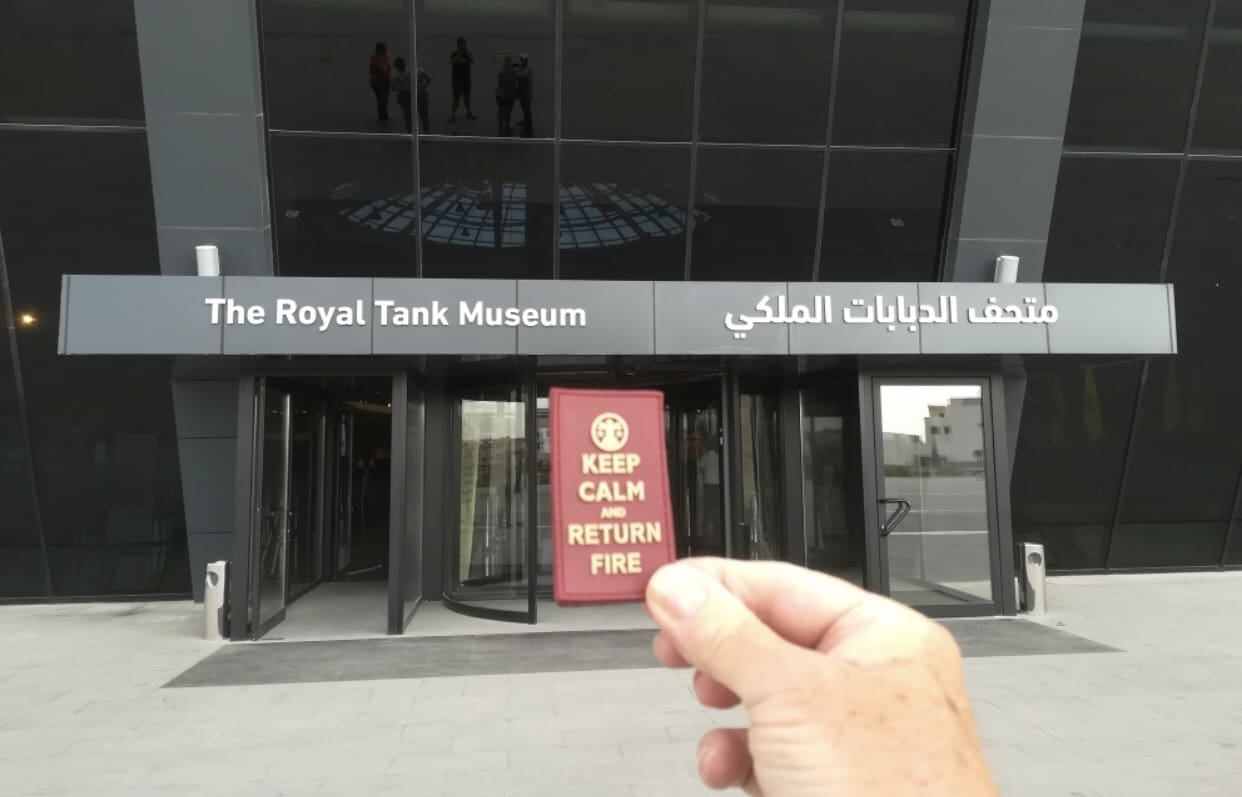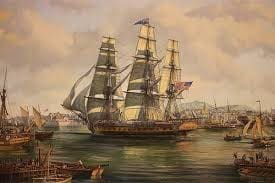Virginia Hall, Army Col. Charles Munske, Army Lt. Col. Leif Bangsboll and Command Master Chief (SEAL) Richard Rogers, were inducted into U.S. Special Operations Command’s Commando Hall of Honor for their remarkable contributions to special operations in a ceremony held at the headquarters on MacDill Air Force Base, Florida, April 18, 2019. Although their actions were from another era, they embody the first Special Operations Forces truth “Humans are more important than hardware.” The four inductees are an eclectic group of special operations pioneers who shared a dedication and a commitment to defending our country.
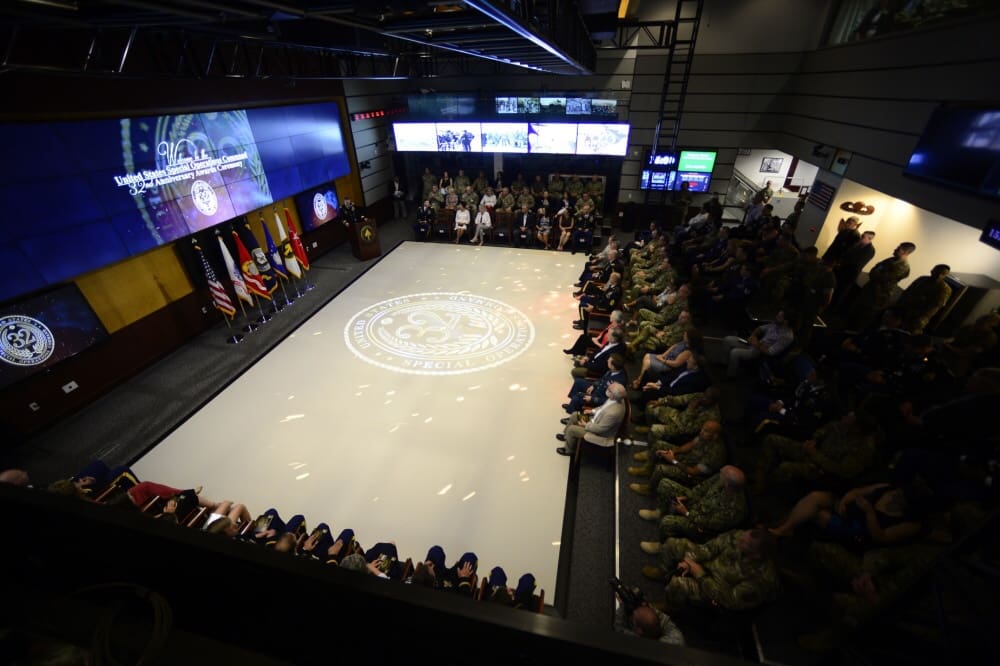
Hall, an amputee and first female operative sent into France during World War II spying in Lyon, the Nazi-allied Vichy government of France. Munske, a career Civil Affairs officer credited for rebuilding Japanese infrastructure after the devastation of World War II and was in the forefront rebuilding both Pyongyang and Seoul during the Korean conflict. Bangsboll, a Danish turned American Office of Strategic Services operator who parachuted behind enemy lines into Denmark helping defeat the Germans during World II earning the Distinguished Service Cross and who would also go on to serve with valor in Korea. Rogers, a SEAL would serve from platoon point man to senior enlisted leader USSOCOM from 2000 to 2003.
The limping lady
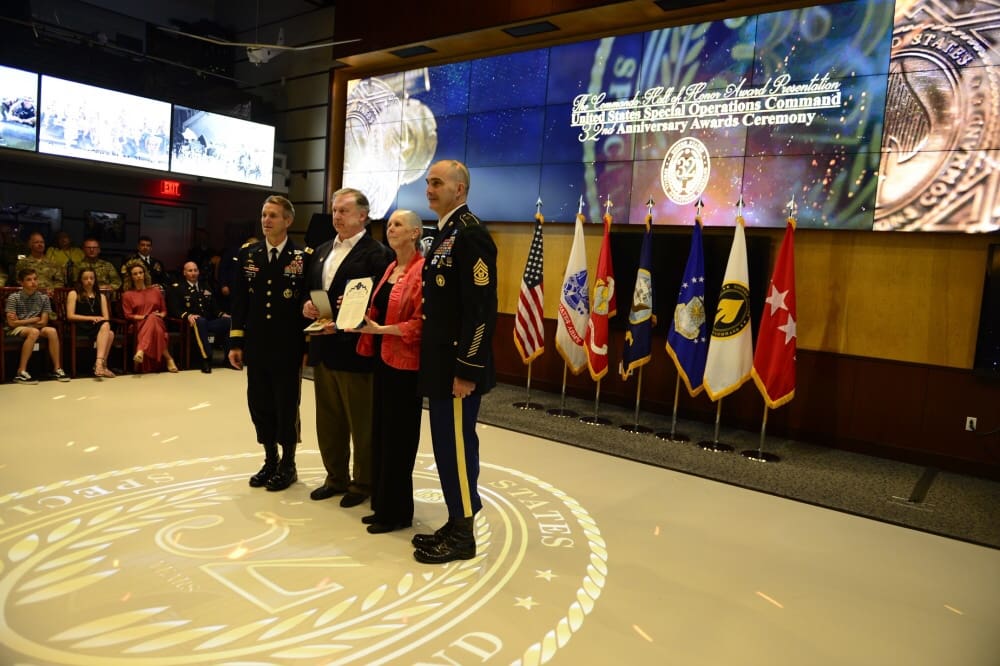
Hall, the daughter of a wealthy family from Baltimore, wanted to become a Foreign Service Officer before the outbreak of World War II, but was turned down by the State Department despite being fluent in French, German, and Italian. Women could be clerks but not officers. Besides, she was missing her left leg below the knee, the result of a hunting accident in Turkey years earlier, which to the State Department further disqualified her.
Undeterred, Hall went overseas and joined the British Special Operations Executive. There, she became the SOE’s first female operative sent into France. For two years she spied in Lyon, part of the Nazi-allied Vichy government of France under the guise of a New York Post reporter. After the United States entered the war, she was forced to escape to Spain by foot across the Pyrenees Mountains in the middle of winter.
Hall eventually made it back to London, where the SOE trained her as a wireless radio operator. While there, she learned of the newly formed Office of Strategic Services. She quickly joined, and, at her request, the OSS sent her back into occupied France, an incredibly dangerous mission given that she was already well-known to the Germans as a supposed newspaper reporter.
Though only in her thirties with a tall, athletic build, she disguised herself as an elderly peasant, dying her soft-brown hair a graying black, shuffling her feet to hide her limp, and wearing full skirts and bulky sweaters to add weight to her frame. Her forged French identity papers said she was Marcelle Montagne, daughter of a commercial agent named Clement Montagne of Vichy. Her code name was Diane.
Infiltrating France in March 1944, she initially acted as an observer and radio operator in the Haute-Loire, a mountainous region of central France. While undercover she coordinated parachute drops of arms and supplies for Resistance groups and reported German troop movements to London as well as organized escape routes for downed Allied airmen and escaped prisoners of war. By staying on the move she was able to avoid the Germans, who were trying to track her from her radio transmissions.
Her chief pursuer was no less than Gestapo Chief Nikolaus “Klaus” Barbie, infamously known as “The Butcher of Lyon.” The one thing they knew about her was that she limped, and therefore she became known to the Gestapo as “The Limping Lady.”
In mid-August 1944, Hall was reinforced by the arrival of a three-man Jedburgh team. Together they armed and trained three battalions of French resistance fighters for sabotage missions against the retreating Germans. In her final report to headquarters. Hall stated that her team had destroyed four bridges, derailed freight trains, severed a key rail line in multiple places, and downed telephone lines. They were also credited with killing some 150 Germans and capturing 500 more.
For her work with the SOE Hall was presented the Order of the British Empire by King George VI. The French government gave her the Croix de Guerre avec Palme. After the war, she was awarded the Distinguished Service Cross-the only one awarded to a woman during World War II. It was pinned on by OSS head Army Maj. Gen. William J. “Wild Bill” Donovan himself.
She went to work for the National Committee for a Free Europe, a Central Intelligence Agency front organization associated with Radio Free Europe. She used her covert action expertise in a wide range of agency activities, chiefly in support of resistance groups in Iron Curtain countries, until she retired in 1966.
Virginia Hall died on July 8, 1982, aged 76. In 2017, the CIA named a training facility after her: “The Virginia Hall Expeditionary Center.”
The Mayor of Pyongyang
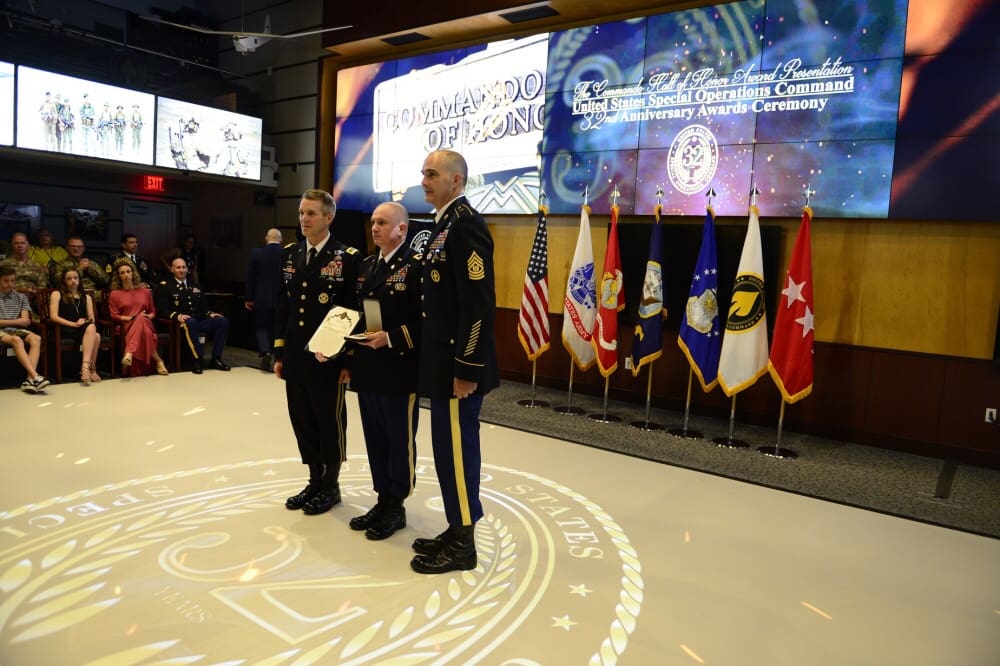
Munske’s lengthy Civil Affairs military career began on Dec. 14, 1914 when he enlisted in the 13th Coast Defense Command, New York National Guard. His first exposure to Civil Affairs/Military Government activities was as a sergeant and interpreter for the postwar Engineer Operations Division of War Damages in Allied Countries section of the American Commission to negotiate peace in Paris.
Munske received a commission on June 7, 1920 as a second lieutenant in the New York National Guard serving until 1940, when he joined the active Army. After being stuck in the U.S. as a Coast Artillery officer in 1944 Munske made a career change to get overseas. He volunteered to attend the School of Military Government at the University of Virginia in Charlottesville. He next attended Harvard’s Civil Affairs Training School from before going to the Civil Affairs Staging Area at The Presidio, California.
In November 1945, he was sent to Japan to serve as the Assistant Chief of Staff G-5 (Military Government) of the 98th Infantry Division, headquartered in Osaka. Much of his time was spent administering civil matters, including jump-starting Japanese local industry. To do this effectively, he learned the language and culture, and attended many meetings and social events in order to make inroads with the local civilian population. His assistance to more than six million inhabitants of the Osaka Fu, Mie, Wakayama and Nara prefectures, would earn him a Legion of Merit and the Army Commendation Ribbon.
In October 1950 and Munske was assigned to the Pyongyang Civil Assistance Team of the United Nations Public Health and Welfare Detachment. He accompanied the victorious UN forces north to Pyongyang, which fell to UN forces on Oct. 19, 1950. He became known as the “Mayor of Pyongyang” when he and his fourteen-man military/civilian team achieved dramatic success when they found resources to reestablish infrastructure, resumed trash collection, established a fire brigade, made sure city workers were paid, immunized 3,500 people against typhus and another 4,000 against smallpox, reestablished the police force and law and order, organized a rudimentary health care system and set up insecticidal dusting stations to prevent and control the spread of lice and flea-borne infectious diseases. They also repaired two power plants, fixed the streetcar and telephone system and began reconstructing the key railroad bridge across the Taedong River. However, all of this hard work was for naught.
By late October 1950, the UN forces had pushed the North Korean Army across the Yalu River, the northern border with China. It was then that massive infiltrations of volunteer Communist Chinese forces attacked behind UN lines. This human onslaught quickly overwhelmed the strung out UN forces forcing them to retreat across enemy occupied territory. By the beginning of December, Communist forces were at the gates of Pyongyang. Munske had no choice but to order the destruction of what his team had recently rebuilt and join the retreat.
His next assignment was as Executive Officer of the Kyongsang-Namdo (Pusan) Provincial Civil Assistance Team where he helped administer the sizeable refugee population in and around Pusan. After UN forces again pushed the Communists north, Munske headed the Kyonggi Do Province (Seoul) Civil Assistance Team. He was instrumental in rebuilding the major metropolitan areas of Seoul, Inchon, and Suwon, all of which had suffered greatly having been twice occupied by the Communists.
The last phase of Munske’s CA career was as Inspector General of the New York Military District, with concurrent duties as Legal Assistance Officer and Senior Advisor for Military Government units. He inspected reserve Military Government units and Reserve Officers Training Corps (ROTC) programs.
Munske retired Feb. 28, 1958 with 20 years of active service while serving nearly 43 years in the military. The 95th Civil Affairs Brigade has named their headquarters building after him.
He passed away on Nov. 14, 1985 at the age of 88, and is buried at Arlington National Cemetery.
OSS operator to Green Beret plank holder
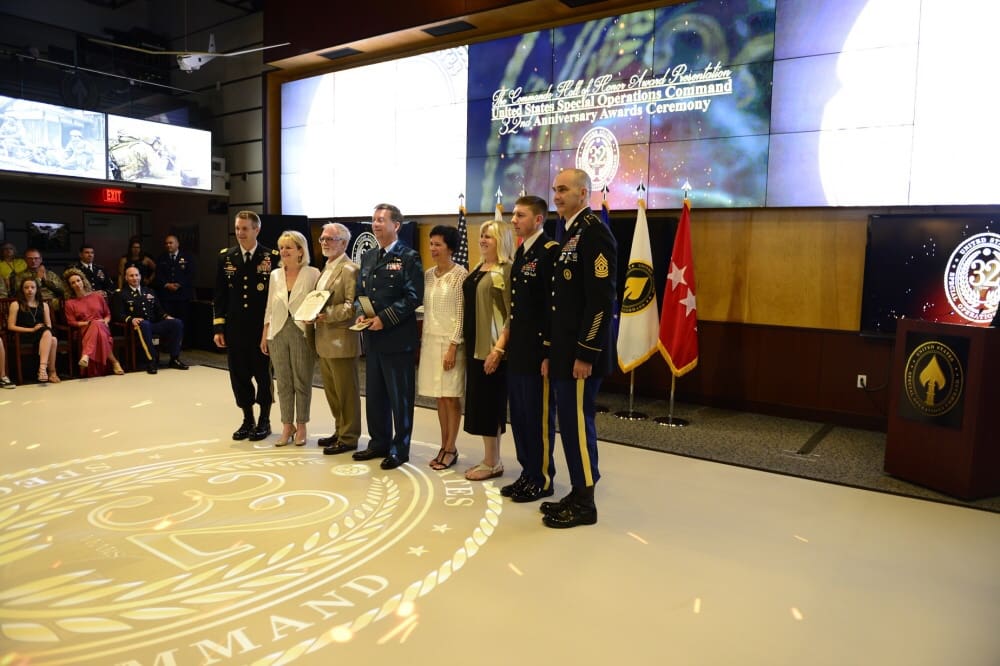
Born in Denmark in 1918, Leif Bangsboll was the son of Danish Navy Rear Admiral Frederick Christian Bangsboll who commanded the Danish submarine fleet. In 1935, he volunteered for the Royal Danish Naval Air Force and trained as an observer prior to joining the merchant marine. In September 1940, he joined the Norwegian Air Force (in exile) in Canada, where he trained as a flight sergeant. Knowing that he would not see action he volunteered for the U.S. Army, joining as a Private First Class on March 22, 1943.
Fluent in Danish, Norwegian, and Swedish, and able to speak French, German and Greenlandic, the Office of Strategic Services recruited him in September 1943. At first, the OSS employed him as an instructor at RTU-11, otherwise known as the Farm, a school for teaching the methods of secret intelligence work. He was then sent to the Danish operations section of the OSS Special Operations branch. Because he was unable to get a U.S. Army commission at the time by agreement with the OSS the British Army gave him a commission as a first lieutenant. He eventually got his U.S. commission on Nov. 6, 1944.
On the night of Oct. 5, 1944 Bangsboll parachuted into occupied Denmark near Allborg, and was “the only American officer serving as an agent” in that country. Until the end of the war, he lived as a civilian- subject to execution as a spy if caught- and helped arm, train, and lead the Danish resistance while reporting on conditions in the country. He also engaged in several sabotage missions, including blowing rail and communications lines seriously delaying German troop movements. While in Copenhagen in May 1945, Bangsboll led a resistance force that captured German artillery pieces and machineguns leading to the surrender of the entire garrison. For his extremely dangerous assignment in a country with a robust enemy counter-intelligence network. Bangsboll received the Distinguished Service Cross and a number of Danish awards. After the war in Europe ended. He then briefly served in Germany with the OSS successor, the Strategic Services Unit.
After returning to the U.S., Bangsboll attended Intelligence Officer’s training at Camp Holabird, Maryland, and served in airborne units at Fort Bragg, NC. Before deploying to pre-war South Korea. There, he served as a Public Safety Officer in the 59th Military Government Headquarters and Headquarters Company. He then became an intelligence and reconnaissance platoon leader in the 187th Airborne Infantry Regiment.
When this unit was sent to Korea as the Regimental Combat Team Bangsboll again went to war. For an action on Nov. 16, 1950 he received the Silver Star for leading a small force behind enemy lines near Pyongwon-ni, North Korea. His platoon overwhelmed a North Korean garrison and discovered the location and contents of a food storage warehouse. Later ordered to destroy the warehouse, Bangsboll once again led his numerically inferior force in killing the enemy defenders, demolishing the warehouse with its estimated 100 to 150 tons of dried food all with no friendly casualties.
When he returned from Korea Bangsboll briefly served with the Central Intelligence Agency before coming to the Psychological Warfare Center at Fort Bragg, North Carolina, with further assignment to the newly-established I0th Special Forces Group (Airborne). Bangsboll taught guerrilla warfare and clandestine operations and helped develop the initial program of instruction. As an instructor, he excelled. He also attended the Psychological Warfare course at Georgetown University thus being qualified in both of the Army’s special operations fields.
Bangsboll retired from the U.S. Army April 30, 1963 and passed away Nov. 20, 2001.
Lifetime of service to naval special warfare
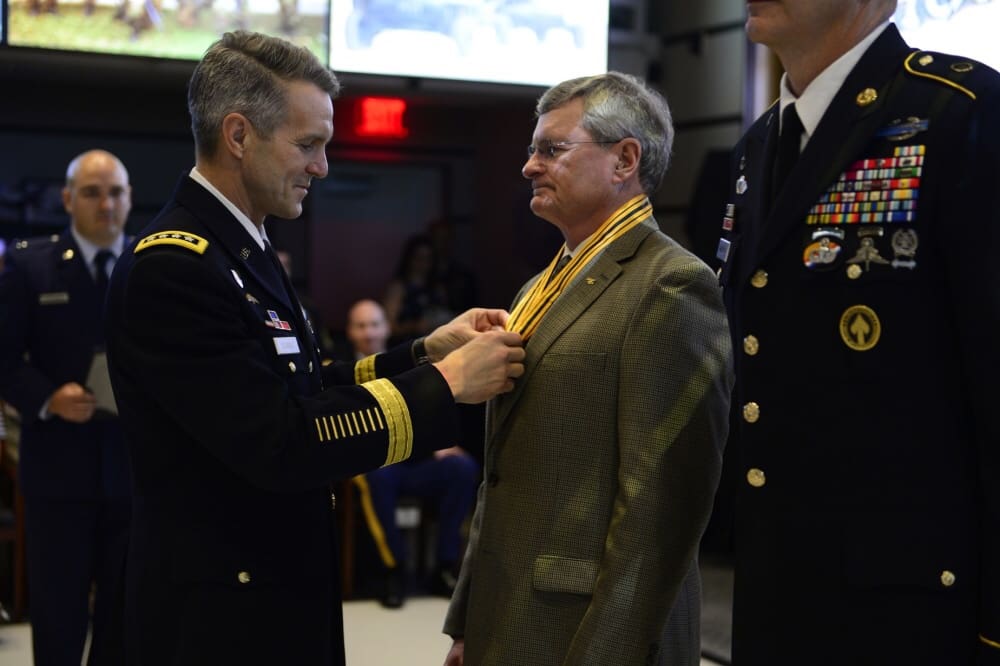
Retired Command Master Chief Petty Officer Richard Rogers, (SEAL), spent 31 years of active duty in elite special operations forces taking countless assignments from platoon point man ultimately becoming the senior enlisted leader for USSOCOM from August 2000 to August 2003.
Rogers also has an extensive resume of military experience within the Naval Special Warfare community. He joined the Navy in July 1972 and completed Basic Underwater Demolition/SEAL training in May 1973. Moving through the ranks he started as SEAL platoon point man and communicator at SEAL Team ONE; as an instructor at BUD/S; as a platoon cartographer/intelligence specialist, the intelligence department head, the ordnance department head, the command career counselor, and a platoon chief petty officer at SEAL Team FIVE; and as a boat crew leader at SEAL Team SIX. Rogers also served as an Operations Chief Petty Officer, Assistance Current Operations Officer at Naval Special Warfare Development Group. He studied Spanish at the Defense Language Institute. Additionally, he served as the Command Master Chief at Naval Special Warfare Unit EIGHT in Panama; Naval Special Warfare Group ONE in Coronado, California; and Special Operations Command, Europe in Stuttgart, Germany.
An expert in a variety in special operations skills, Rogers was qualified as an open and closed circuit scuba diver, open and closed circuit diving supervisor, static line and free-fall parachutist, static line and free-fall jumpmaster, small arms range safety officer, close quarter combat range safety officer, and helicopter castmaster. He trained and mentored recruits aspiring to become SEALs and Special Warfare Combatant-craft Crewman, trained indigenous forces throughout southwest Asia.
A seasoned combat veteran he held leadership positions in combat Operations Just Cause in Panama and Allied Force in Bosnia, and he became the first Theater Special Operations Command-Europe senior enlisted leader.
As the senior enlisted leader of USSOCOM he ushered in a new era for SOF, when the command transitioned from peacetime engagement to the War on Terrorism.
Rogers retired from the Navy in 2003 and continues to work to improve the training and professional development of naval special warfare personnel as a civilian at the Center for SEAL and Special Warfare Combatant-craft Crewman. He became the driving force in the development of the new SEAL and SWCC ratings for enlisted personnel. Rogers also successfully negotiated additional senior enlisted billets from the Navy to ensure proper force structure for the community.
In May 2006, he assumed the N3 (Operations directorate) position at the Center for SEAL and SWCC, a learning center to manage the new SEAL and SWCC ratings, where he continues to improve the training and professional development of naval special warfare personnel.
In total, Rogers has dedicated 47 years to naval special warfare and special operations. Mentoring the special warfare community for nearly half a century, his contributions will have a lasting impact for future generations of naval special operators.
Story by Michael Bottoms, USSOCOM



